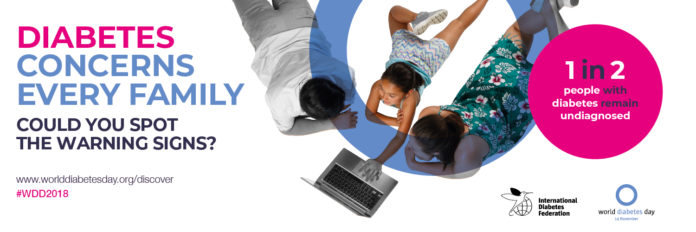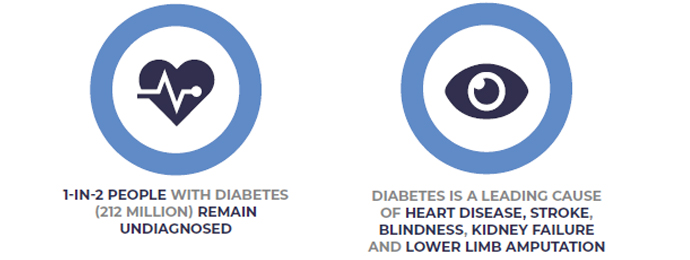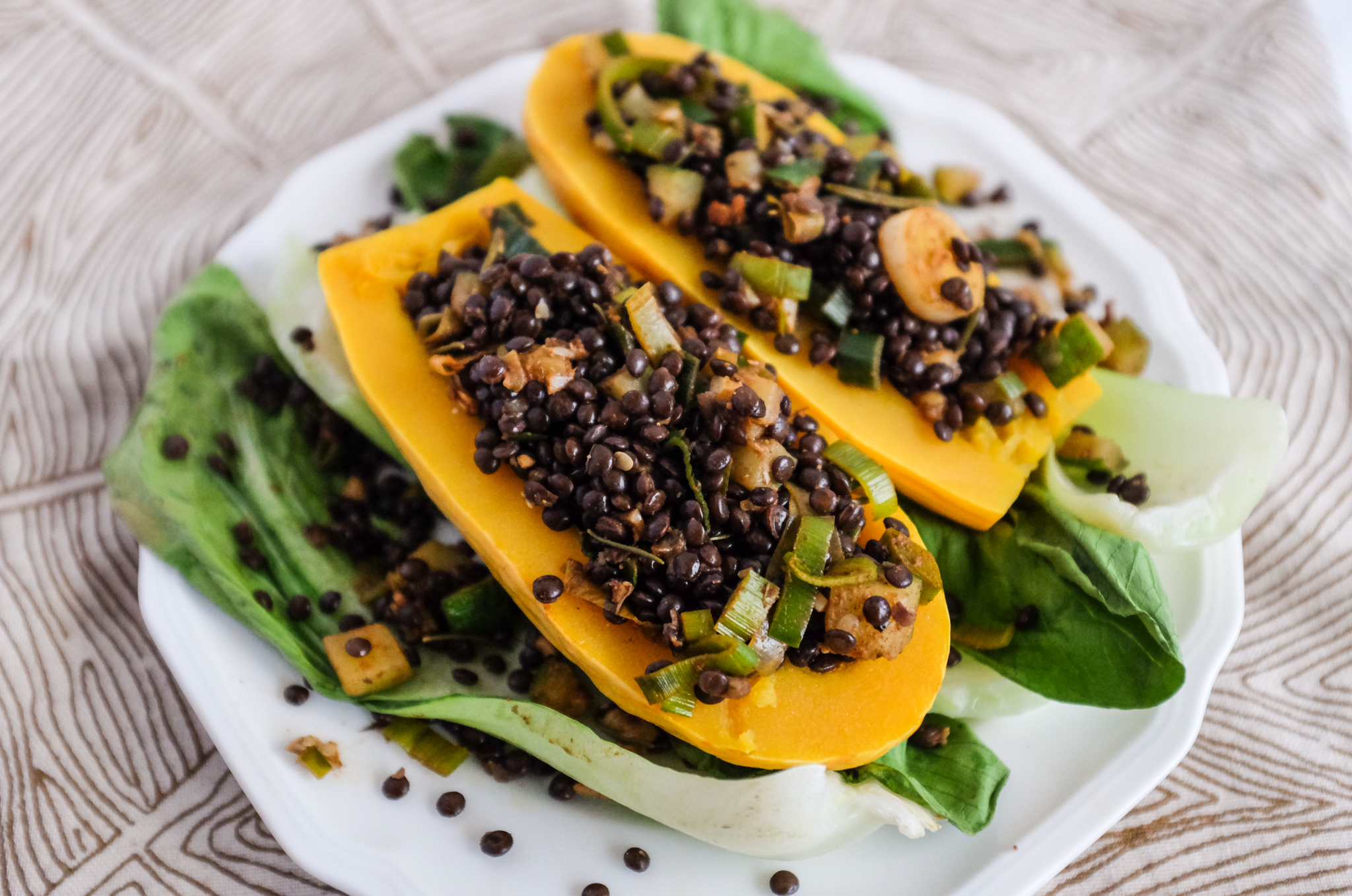
More than 30 million people have diabetes, and an additional 84 million have prediabetes in the United States. This is according to the most recent report from the American Diabetes Association (2017). Worldwide, there are 420 million people suffering, a number that is expected to rise to 522 million by 2030, as reported by the International Diabetes Federation.
Most of these cases are type 2 diabetes – which is largely preventable. Pretty scary, don’t you think? Rather than sit back and allow an increase in the prevalence of diabetes (and your blood sugar levels), let us raise awareness and promote healthy behaviors by getting regular physical activity, eating a balanced diet, and becoming educated.
Unsure what diabetes is, or want to know the difference between the two main types? Watch this:
National Diabetes Month, World Diabetes Day
Here’s the great news: November is national diabetes month, and November 14th is World Diabetes Day. There are hundreds of initiatives both worldwide and locally to help get your blood sugars in control and educate you about the risk of developing diabetes.
Me being one of them.
Next Wednesday (11/14) at the East Side Co-op in Northeast Minneapolis, I will be providing free diabetes screenings from 3 p.m. – 8 p.m. Bring friends and family to get tested, learn about diabetes, and assess your risk. If you test your blood sugars and have an old or extra glucose meter, donations will be accepted. Please sanitize the meter prior to drop off, and if you cannot attend the screening, you can drop it off between 11/8 and 11/16 at East Side Coop or during the entire month of November at one of three Neighborhood Healthsource locations in Minneapolis.

As a Certified Diabetes Educator (CDE), I see many patients with complications because of uncontrolled blood sugars. Not only does it impact your quality of life, but it also takes a toll on your pocket book. An average of $16,752 per year is spent on medical expenditures alone for those with diabetes, which is 1 in 4 healthcare dollars (ADA, 2017 data). It’s a life long disease, but it’s 100% controllable.
Simple (free) advice from a dietitian nutritionist and CDE:
- Eat in moderation, with an emphasis on healthier foods like whole-grains, vegetables, fiber, low sodium and low cholesterol foods
- Avoid soda (it’s truly the only food/beverage I recommend to eliminate or have on the rare occasion; it has zero nutritional value)
- Find ways to decrease your stress like meditation, activity, breathing exercises
- Be active! Get at least 150 minutes a week
- If you’re at a high risk for developing diabetes, get your blood sugars checked more regularly
As a special bonus, I’ve also included a diabetic-friendly recipe:
Stuffed Moroccan Delicata

INGREDIENTS:
2 delicata squashes seeded
4 cups water
2 sprigs rosemary
4 cloves garlic
4 cloves garlic minced
cup beluga lentils
1⁄2 leek
1 tablespoon olive oil
1 zucchini diced
3⁄4 teaspoon paprika
3⁄4 teaspoon cumin
1⁄2 teaspoon ginger
1 pinch salt
1 pinch pepper
2 heads baby bok choy
DIRECTIONS:
Preheat oven to 375F. Place delicata squash guts/innards faced down (skin side up) into a 9”x11” casserole dish (at least 4” high), add one rosemary sprig, half the garlic cloves, and pour half the water into pan over the squash. Put in oven for 25 minutes.
Meanwhile, rinse lentils in cold water. Add them to a quart pot and cover with remaining water along with 1 sprig rosemary and a pinch of salt. Bring to a simmer and cook for 25 minutes.
In a frying pan, heat olive oil and saute leeks, zucchini, minced garlic, and moroccan spice mix. By this time, the squash should be close, so keep the spiced zucchini/leek mixture warm.
Remove squash from oven and add baby bok choy in it’s place. Put back in oven on lower shelf and cook for 3-5 minutes on broil (watch so you don’t burn and overcook). Remove from oven when done.>Drain your lentils if necessary and add to the zucchini/leek mixture.
Arrange baby bok choy on a plate, dividing evenly. Place a halved delicata over the bok choy and fill with lentil/zucchini mixture. It’s easiest to use a spoon here. Top with chopped parsley if you want added flavor as a garnish.
Read this article next: Celebrating 100 years of food, health, nutrition, education
















